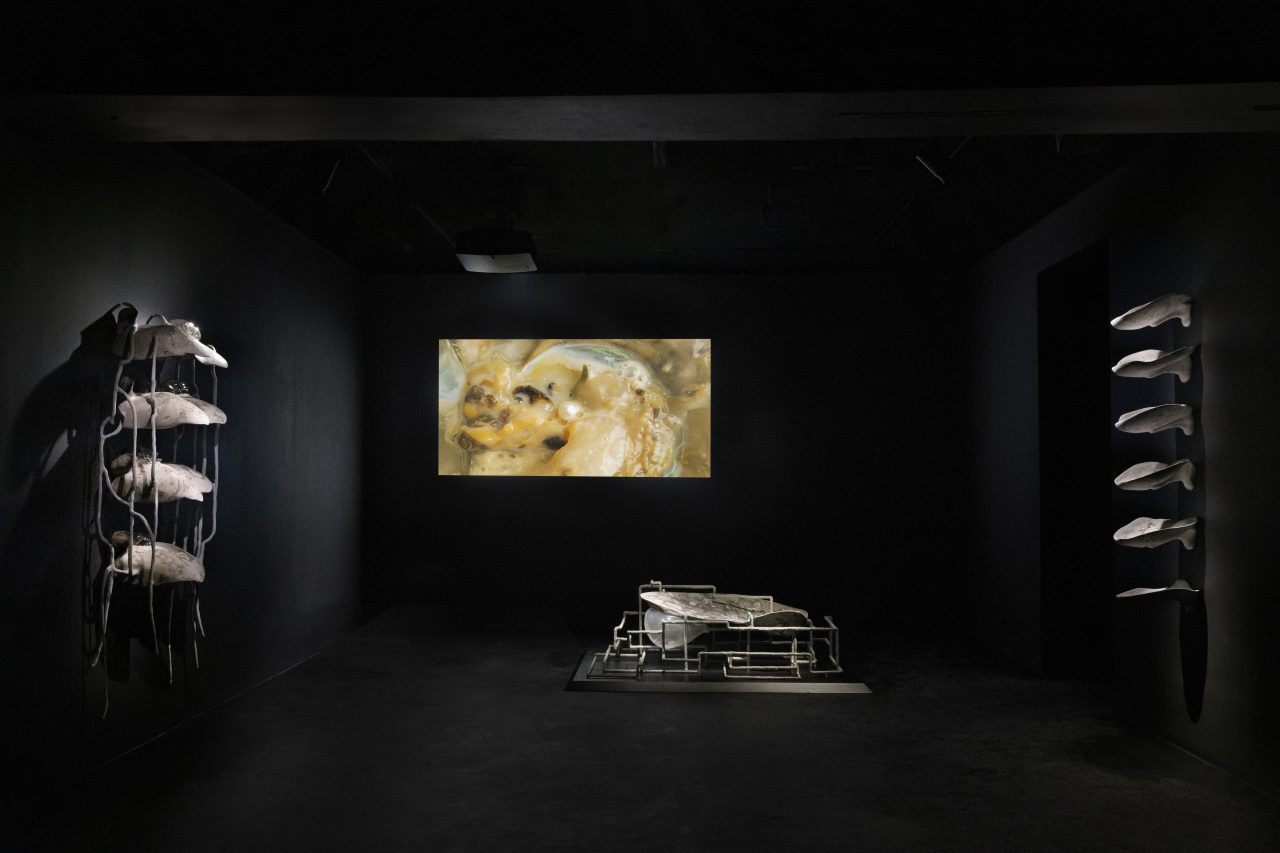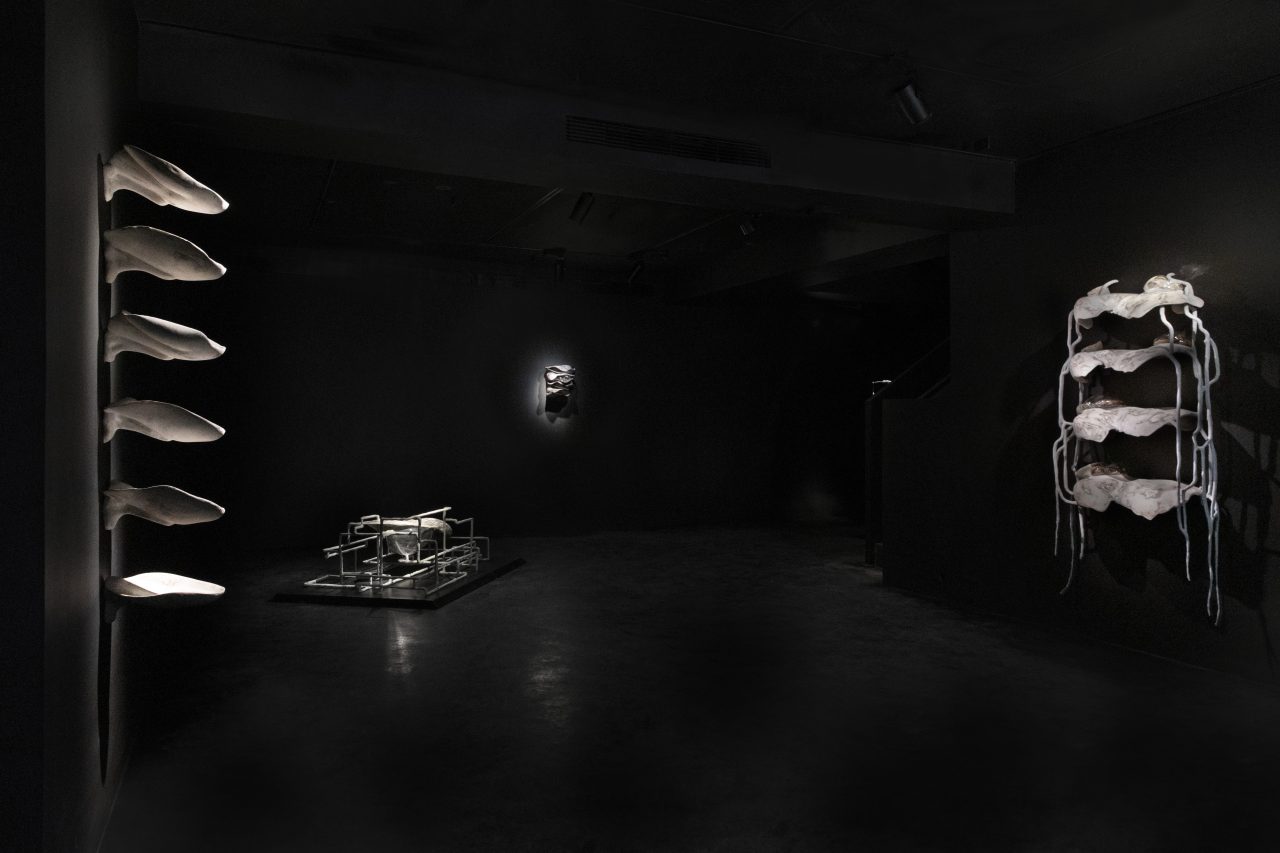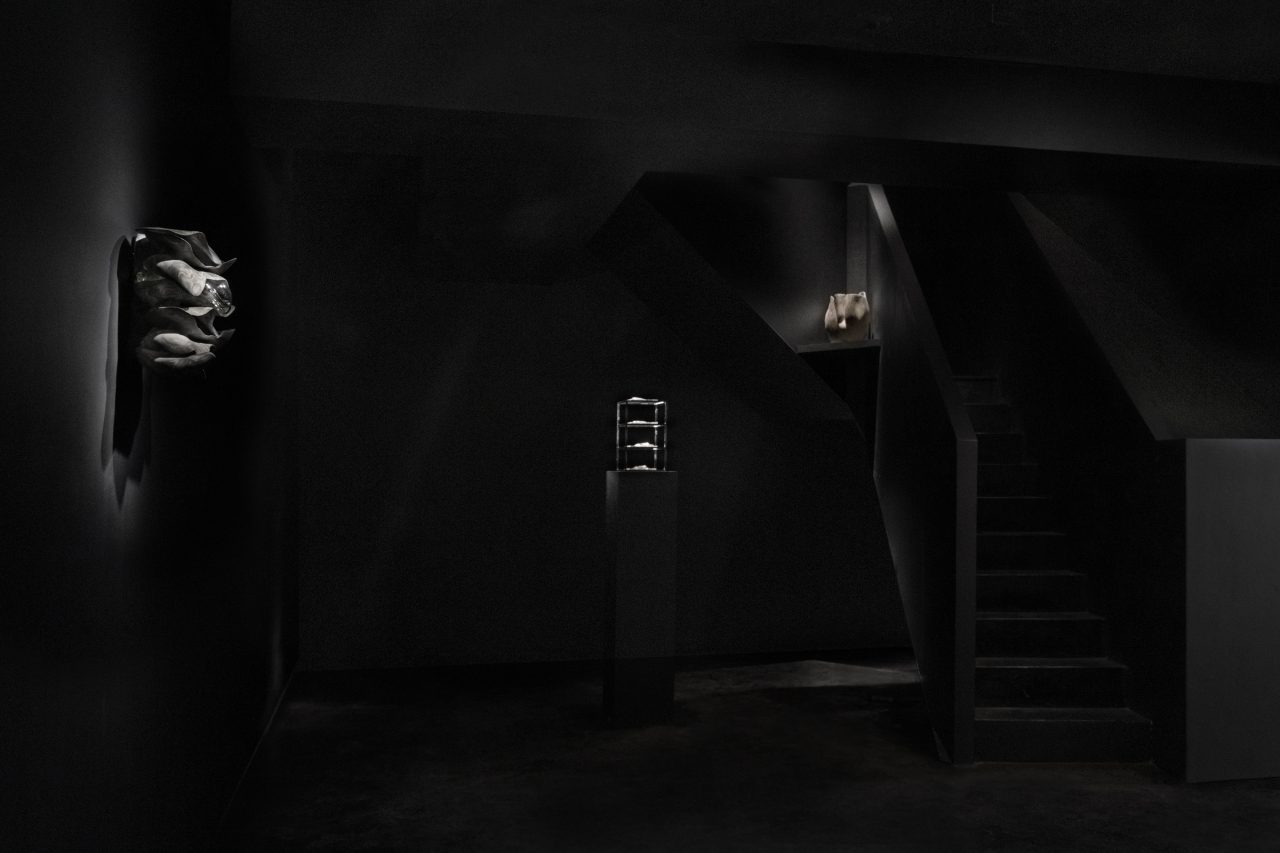Sites of Wounding: Chapter 1
Jes Fan




Empty Gallery is pleased to present Sites of Wounding: Chapter 1, New York and Hong Kong-based artist Jes Fan’s second solo exhibition with the gallery. Originally trained in glassmaking, Fan’s practice in expanded sculpture merges a regard for the haptic qualities of form with a radically transdisciplinary approach to research and material experimentation— often incorporating unstable organic compounds such as sex hormones, skin pigments, and other biological agents. While his earlier investigations focused on the granular deconstruction of biological essentialism, Fan’s recent work has turned away from these concerns to engage further with organisms and ecosystems beyond the human. For Sites of Wounding, Fan returns to Hong Kong to research native species that generate precious materials through processes of contamination, penetration, and incorporation. In a series of new works, he explores the affective resonance of these woundings as they relate to both the generative potential and the psychosomatic trauma of colonial subjectivity.
The first chapter of Fan’s project takes the Pinctada fucata oyster, a species native to Hong Kong and key to several historical local industries, as its point of departure. Pearl formation might be thought of as an essentially defensive mechanism which only coincidentally happens to produce the valuable byproducts we consume as luxury goods. Occurring when a foreign object lodges itself inside the oyster’s vulnerable body, the host slowly secretes layers of nacre, neutralizing the foreign matter and absorbing it into its own body. Fascinated by this quasi-alchemical transformation— the transmutation of the grotesque and threatening into a fraught type of hybridized beauty— Fan began to conceptualize pearl formation as an extended metaphor for colonial subject formation in Hong Kong— finding a kind of poetry in the linkage to the island’s pre-colonial pearl farming industries and it’s anglo-imperial moniker “Pearl of the Orient” [東方之珠].
Staging the investigation of material history as a kind of personal and cultural mythology, Palimpsest (2023) poetically documents a nearly three year-process where Fan collaborated with local scientists from the University of Hong Kong to cultivate oysters and implant them with the individual characters— 東, 方, 之 and 珠 — which compose the aforementioned phrase. In the process, the mollusks are forced to change the structure of their own bodies in order to survive— an undertaking with parallels to Fan’s previous exploration of biohacking and body modification as methods of eclipsing normative gender ecologies. The shells resulting from this process carry the inscribed traces of this violence in the form of ideograms etched into their pearlescent internal surfaces. Merging with, or perhaps overwriting, the oyster’s natural patterning, Fan’s gesture could be interpreted as a form of perverse calligraphy, a kind of traumatic writing where the ground of meaning is inseparable from an originary violence.
Displayed in a metal armature reminiscent of those found in natural history displays, C is for you presents a selection of individual shells which have been embalmed in glass. Kiln-fired together with glass sheeting, the resulting organic forms encase deposits of ashes, evidence of where the shells have burned away. Fan has described his process of material experimentation as being both haptic and led by an interest in the shifting energy states of materials. In this case, the abstract juxtaposition of familiar mother of pearl shells— redolent with associations of luxury and empire— and their charred and blasted counterparts reads almost as a spontaneous compression of history.
These thematics are echoed in a series of new aqua resin, glass, and steel sculptures. Rendered in mottled shades of pale teal, mauve and olive, these works extend and refine Fan’s method of originating forms from casts of living bodies— which he then abstracts further through hybridization, sequencing, and repetition. The final pieces at once bear the residual traces of their corporeal sources while also transmuting them into forms more animal or mineral in nature. Sequential compositions such as Left torso, four times, appropriate a vocabulary of reduced serial gestures in order to suggest processes of molting or metamorphosis and sort of circadian temporality. Other works, such as Left and right knee, grafted make explicit reference to mollusk forms, framing their accompanying glass globules as possible outgrowths of unfamiliar origins. Likewise, in Bivalve I and Bivalve II, the manner in which cyst-like glass forms seem to dangle and ooze from shell-like resin basins gestures towards an ambivalent relationality of survival, symbiosis and extraction.
Uniting the works in Sites of Wounding is Fan’s deployment of material research and experimentation as a method for working with and through the simultaneously destructive and creative potentials of contamination. Rather than rendering these processes in purely negative terms, Fan’s works locate emergent beauty within these ambivalent sites. Beyond a direct articulation of post-colonial pain, his vividly realized woundings express the resonant multiplicity of the colonial subject undergoing and processing trauma which is at once bodily, as well as cultural and historical.